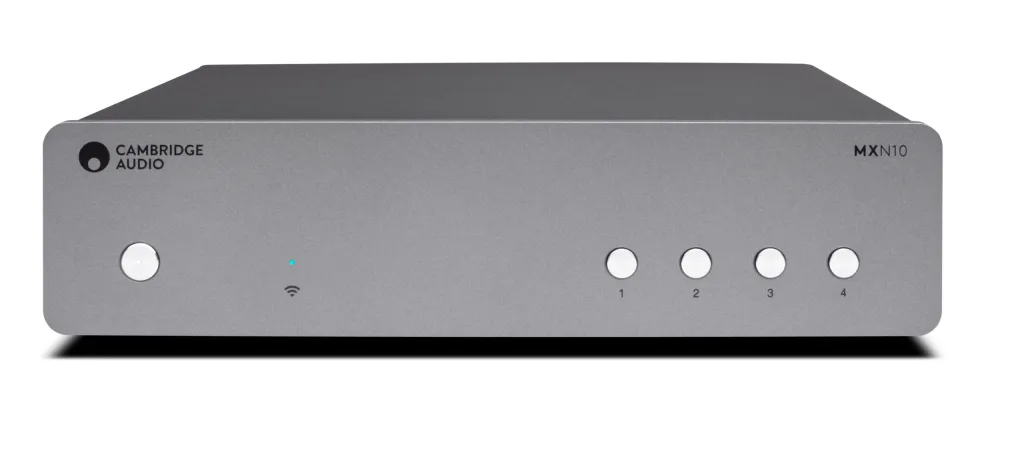
Please see This Post for a detailed rundown of our reference system.
This article first appeared in Audio Appraisal, where you can find Audio Equipment and Music Reviews, Opinions and Tutorials.
£100 = US$ 122 = CA$ 167 (Oct 12, 2023)
I’ve had a lot of readers urging me to cover more big-brand products here and I am trying my best. Unfortunately getting the PR agencies representing some of those brands onboard has become such a challenge that there have been times I’ve considered giving up the blog altogether, or taking it in a different direction. But there’s a great need for honest, unbiased reviews in this industry. I firmly believe that hi-fi should be accessible to everyone and that you shouldn’t have to wade through marketing hyperbole, disingenuous advertising, BS audiophile pseudoscience and brand snobbery when you’re trying to make a purchasing decision. So I aim to continue to bring you these reviews, and sincerely thank the readers who reach out to me on a daily basis with feedback (good and bad) and kind words on my work.
In particular I’ve had many requests to check out more Cambridge kit. Cambridge recently announced two new additions to their lineup, the AXN10 and MXN10, the primary difference between them being the size of their enclosure. The half-width MXN10 was so appealing to me that I bought one with my own hard-earned cash. Let’s check it out together.
Cambridge Audio’s StreamMagic platform has long been a favourite of mine in the hi-fi streaming arena. They have the best app, and generally all the features you could need, besides fully featured multi-room functionality and niceties like CD ripping, USB audio output and SSH console access. I’ve had a CXN V2 in my system for some time and it’s never let me down, effortlessly handling my simple streaming needs. It’s primarily used to stream internet radio, from Apple devices via AirPlay, and from a Sinology NAS over the local network.
My approach to system building is led by measurements and scientific data. If it measures well, it should sound good. My ultimate goal has been a system that gives me an accurate representation of the source material, not the coloured palette that most audiophiles actually favour and view as ‘neutral’, when it is in fact anything but. The best objective performance money can buy tends to come in smaller packages. Think of the current Hypex Nilai amps, for example, phono stages from Michael Fidler’s Classic Audio or DACs and preamplifiers from Topping.
They’re all half-size, and as a consequence my system comprises stacks of half-sized boxes. There are only a few full-sized hi-fi boxes left. I still have a Cambridge CXC CD transport, and a Cambridge 651T DAB / FM / AM tuner, which in my opinion is one of the finest tuners ever made. I was intrigued by the half-size form factor of the new MXN10, suggesting that perhaps there is more half-size Cambridge kit to come. A slimmed-down CXC, hopefully.
While the MXN10 cuts the box size in half, it remains fully loaded in terms of features. Besides the physical dimensions, the AXN10 and MXN10 are identical, so this review applies to both. The extra £100 buys you a bigger chassis to fit neatly alongside traditional hi-fi. I’m sure at least 1 reviewer will claim the extra air in the box has mysterious, wondrous sound quality benefits, but here in the real world the extra dimensions are aesthetic only.
You get optical and coaxial digital outputs, capable of 24/96 and 24/192 PCM resolutions respectively. The DAC is an ESS Sabre ES9033Q, capable of 32-bit, 768kHz PCM and DSD512. The DAC in the CXN is archaic in comparison. The WM8742 proceeded the sale of Wolfson Microelectronics to Cirrus Logic, and maxed out t 24-bit, 192kHz PCM. The CXN does support DSD64 at least, though I’m not sure if it’s using the native DSD support int eh DAC or a PCM conversion.
Both new models have a single-ended output only, but it’s a good one. Signal to noise ratio is better than 110dB (20Hz – 20kHz), distortion is 0.001dB from 20Hz to 20kHz reference a 0dB output, and frequency response is 20Hz to 70kHz, with a maximum 1dB roll-off at the upper extreme. Essentially ruler flat performance within the audioband, and the bandwidth is not filtered so actual frequency response is better, albeit with a more significant roll-off at both extremes. Either way, you can’t hear it.
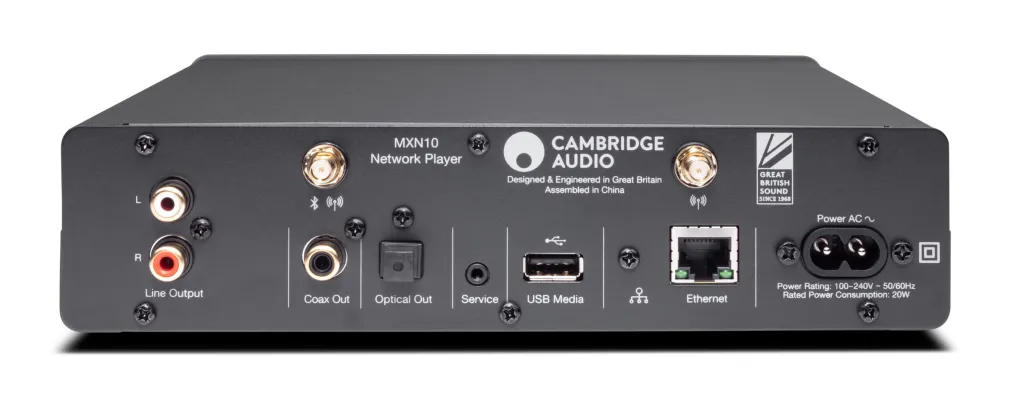
RCA output impedance is 500Ω at the industry standard 2V RMS (±10%), and unlike the CXN there is no digital preamp mode so the AXN10 and MNX10 must be used with an amplifier that has its own volume control. This makes sense as there is neither a physical dial nor a display on either streamer, and neither have a remote handset either. They are controlled exclusively via the Stream Magic app, with a row of buttons on the fascias programmable to favourite presets for quick, easy access.
I’m sure many are asking whether the CXN is still worth the extra outlay. The digital to analogue conversion hardware in the AXN10 and MXN10 is undoubtedly superior bar the omission of a balanced output. The CXN gives you a display, physical transport controls and a remote, but none are deal breakers given that the StreamMagic app is how most people will control the streamer. The CXN has a front USB port for connecting storage devices which, sadly, the AXN10 and MXN10 do not. And of course, the CXN can operate as a preamplifier, with a couple of extra digital inputs and a volume control to feed a power amp directly.
The choice ultimately comes down to your needs. If the display, transport controls, remote, preamp functionality and a balanced output are important to you, the CXN ticks those boxes. If you want current DAC hardware and the ability to stream the highest resolution PCM and DSD audio files, and pass through MQA content to an external DAC, the AXN10 or MXN10 are the current options to choose from. Hopefully a CXN upgrade in the not-too-distant future with updated digital hardware. But I dare say most won’t find the features of the AXN10 and MXN10 lacking.
The 4th generation StreamMagic module is based around a 64-bit, Quad core ARM Cortex-A53 CPU clocked at 1.8GHz. It has most streaming bases covered from Spotify to Deezer and Tidal (native or Connect), AirPlay2 to Amazon Music and Qobuz, internet radio, Chromecast and Roon. There’s UPNP and DLNA playback too and you can hook up a USB drive formatted as FAT32, NTFS, ext3, ext4 or ExFAT and play digital music files directly. Format support is extensive with ALAC, WAV, FLAC, AIFF, DSD (up to DSD512), WMA, MP3, AAC, HE AAC, AAC+, OGG Vorbis, HLS/DASH, and playlists in .m3u or .pls all covered.
Neither contain an MQA decoder, but they will pass through MQA content to an external DAC via the digital outputs. The matching DACMagic 200M is MQA compatible. This isn’t a deal breaker, as in this author’s opinion (backed up by fact) MQA is yet another audio industry profiteering exercise with no real-world or scientific benefit.
Apple Music subscribers can stream via AirPlay or Bluetooth, though AirPlay is preferable as it supports 16-bit, 44.1kHz lossless streaming. You can’t stream high-resolution 24-bit, 192kHz content from Apple Music to the AXN10 or MXN10. The lack of native Apple Music support is a shame, but Apple making native integration difficult for manufacturers is nothing new. I wonder if something could be achieved using the StreamMagic app and the MusicKit API, or whether further liaising with Apple might bear fruit as proper Apple Music integration in the Stream Magic app would certainly be in the interest of Apple Music subscribers. Further proof that owning the music you play is better all around.
Networking is either wired or wifi. I was surprised, and a little disappointed to note that the wired networking is not gigabit (1000 base-T) capable, which would be more robust streaming high-res files over the network. I wasn’t even aware anyone still made a 100 base-T controller. Wifi is supported on both the 2.4gHz and 5gHz bands with WPA2 and WPA2PSK encryption. There’s no mention of WPA3, so I’m not sure how the AXN10 and MXN10 would cope with the latest generation of Wi-Fi 6E routers and WPA3 security. For most users both are probably a long way off becoming standard and I’m sure the lack of WPA3 support can be addressed in software.
Bluetooth is onboard, version 5.0 A2DP/AVRCP, supporting SBC and AAC. Sadly there is no AptX or AptX HD support which is a shame, you have to shell out for the Cambridge DACMagic 200M for AptX. The Bluetooth implementation is as a receiver only, you cannot transmit to Bluetooth headphones or speakers from the AXN10 or MXN10.
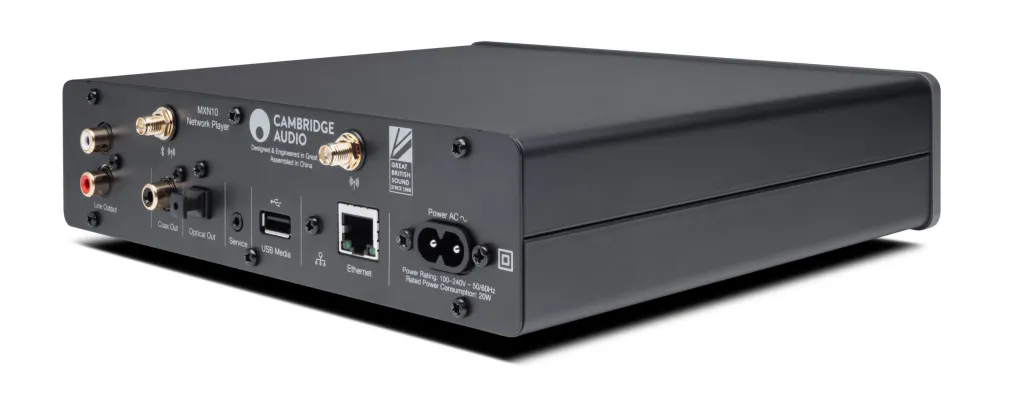
There are some gaps in the software that are filled by competing products. The ability to connect up a CD drive, for example, and rip, encode and tag discs to a USB storage medium or a network volume would be a very welcome addition. Likewise a facility to connect an IR blaster and remotely control other components through the StreamMagic app. The most obvious omission however is the lack of USB output support. Connecting an external DAC via USB seems a logical way to turn the smaller MXN10 especially into a streaming bridge, capable of streaming high-res content all the way up to PCM768 and DSD512 (or even DSD1024) to a DAC of your choice.
This could easily be added in software and is a suggestion I hope Cambridge take onboard. Likewise CD ripping is simple with existing open-source packages that need only be wrapped in an interface. I’d do it myself if Cambridge allowed SSH access for developers and admins who want to squeeze a bit more functionality from what is, in effect, a small computer running a customised Unix operating system.
I’d also like to see more configuration options for the front preset buttons. The ability to turn them into transport buttons, for example, to quickly skip a track from the front of the streamer, or the ability to switch sources. There’s a lot of potential here, as yet unexploited.
The MXN10 is identical in size to the DACMagic 200M at 215 mm wide, 25 mm high and 191 mm deep, excluding the terminals and antennas. It is constructed of a two-part chassis with the same floating design that Cambridge have adopted across most of their product range. It comes finished only in ‘Lunar Grey’, which (I’m told) blends reasonably well with typical black and silver components as it is a darker colour.
The enclosure could benefit from some damping inside the top panel which rings when tapped, but otherwise it’s it’s nicely put together. The switching power supply is self-contained with a figure of eight power connection on the rear panel. Regional cables are included in the box, as are the two antennas for wifi and Bluetooth and basic quick start documentation.
Setup is easy. I connected via Ethernet, but Wi-Fi setup is easily achieved by following the instructions in the StreamMagic app. The streamer will apply any outstanding firmware updates during the setup process, with the option to enable ‘early updates’ to receive beta firmware if you like. I always enable this as you get early access to new features and I’ve never encountered any instability as a result, though users who aren’t technically confident may wish to leave this disabled and stick to the fully tested release firmware.
You can change the device name, AirPlay name, power down timer (default 20 minutes) and the standby mode. In eco mode the streamer can only be woken by the front standby button. Network standby allows you to wake the streamer via the StreamMagic app, though with higher standby power usage as the network circuits are always active. The Roon Ready DSD mode for the digital outputs is configurable for DoP or PCM. I don’t use Roon and haven’t tested the integration. Settings are accessible via the StreamMagic app or from a browser. There are no playback or source controls available from the browser interface which would be good to see, or perhaps even a simple API to facilitate automation over the network.
It occurred to me that I’ve yet to cover the StreamMagic app UI, so here’s a basic rundown. The Home Screen gives you access to recent stations, sources and presets, your available stream magic devices and their settings.
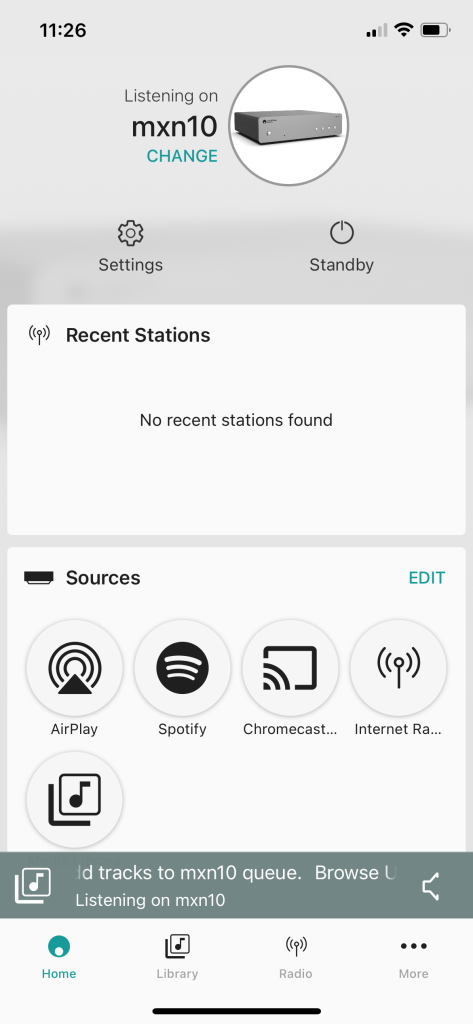
The source list is configurable so you can hide services you don’t use. There are 99 preset slots available, 4 of which can be accessed via the front panel.
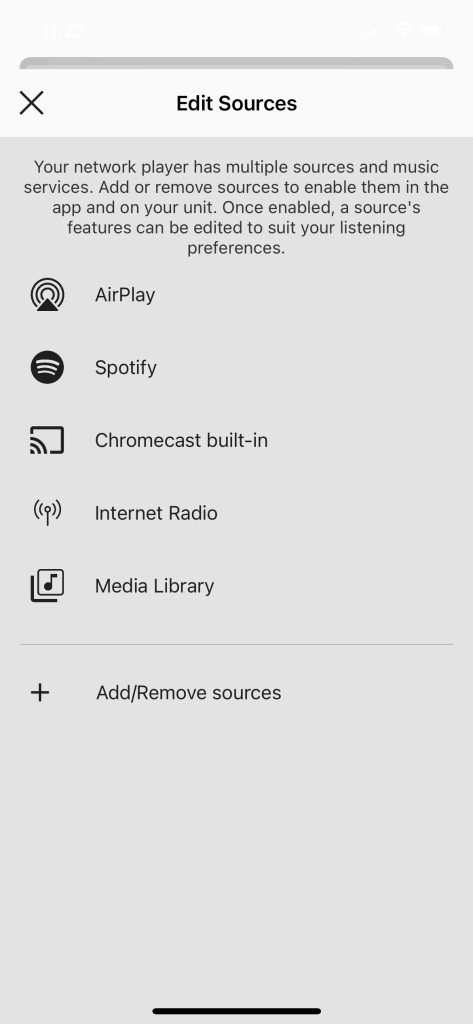
The radio tab gives you access to well over 20,000 global internet radio stations. It’s an extraordinary amount of choice with categorised ‘local’ stations by region, and a handy search function to narrow down your selections.
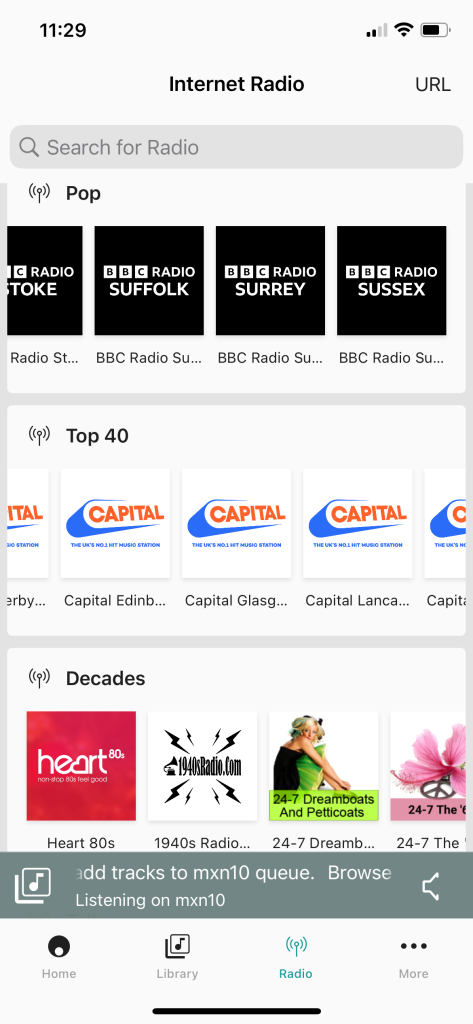
You can find everything here from sports to news, local stations, worldwide BB stations and stations exclusively broadcasting tracks from popular artists. There’s more content available here than any radio fan could consume in a lifetime.
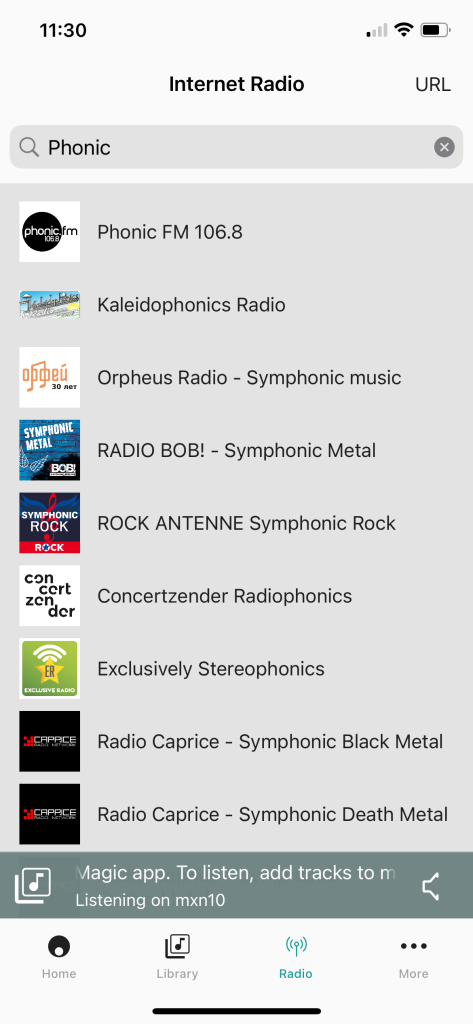
The music library tab gives you a list of your connected USB devices, along with network servers and the native Tidal, Deezer and Qobuz integration.
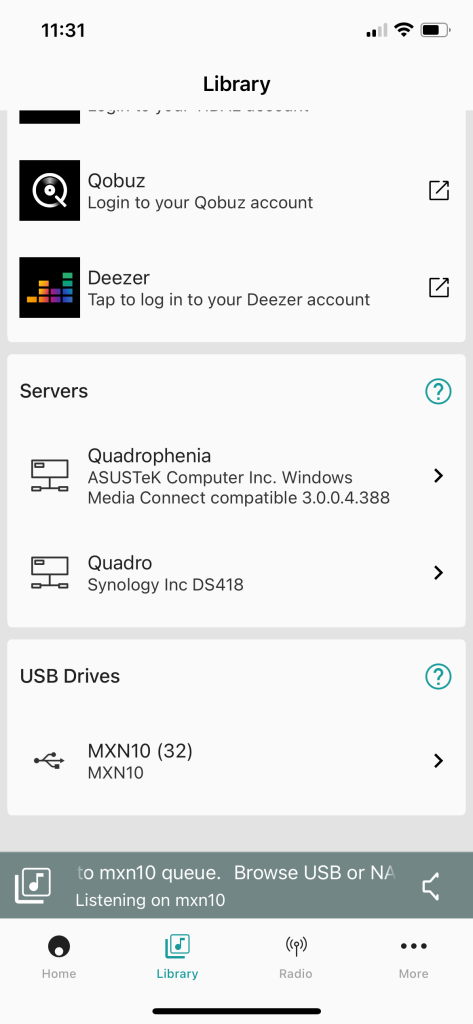
UPNP / DLNA network servers appear here, with the option to browse by folder or metadata, with a persistent search function available on almost every screen that, despite the lack of indexing, is fast, efficient and accurate, even scanning a NAS loaded with hundreds of thousands of tracks.
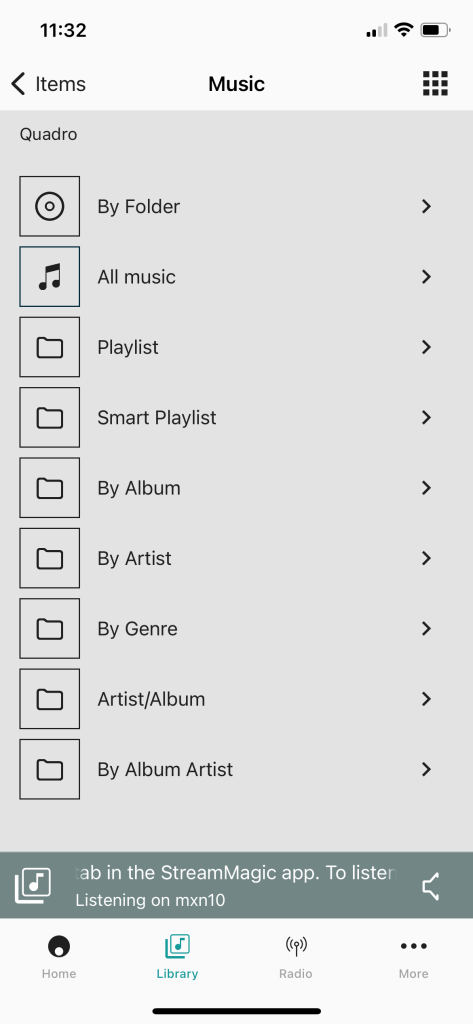
The ‘now playing’ screen shows the current track, time and bitrate, with transport controls too. There’s a volume control here for compatible devices, which in the case of the NP30, StreamMagic, CXN, 851N and Edge NQ will control a compatible amplifier over the control bus.
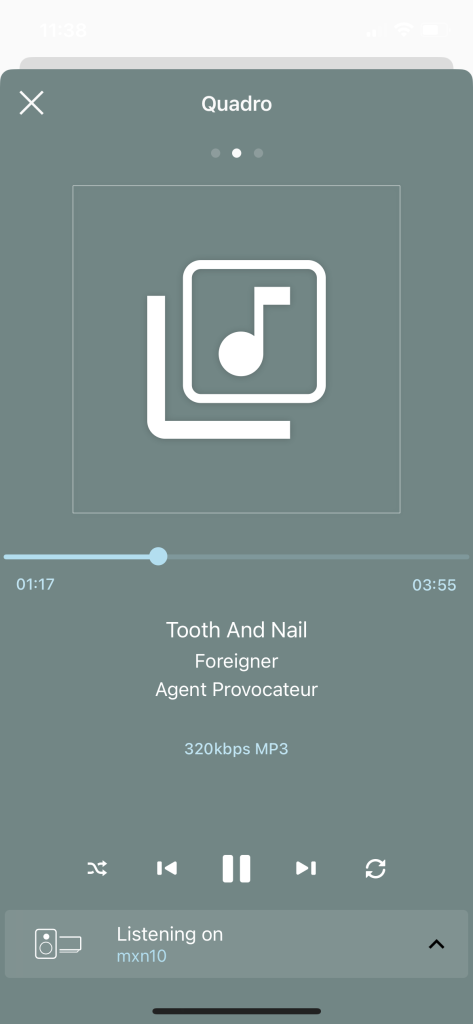
The queue function can be edited on the fly to create a playlist of content from any library source. You can manually edit the track list or clear the queue, or use the shuffle button to play the queue randomly.

Lastly we have the player settings, which essentially replicates the webpage you access by typing the ip address of your player into a browser. There are a small handful of app settings too including dark mode, language switching and a facility to send app feedback to Cambridge directly.
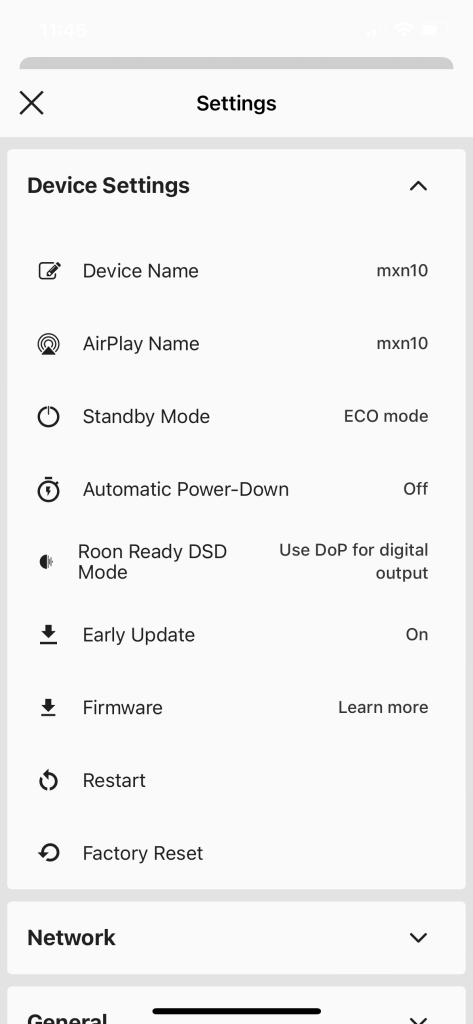
The app is excellent. There are a couple of general bugs here and there, and a few accessibility bugs that need to be ironed out, but it’s a solid, dependable app. With the exception, perhaps, of Yamaha’s MusicCast, and Arylic’s 4Stream as a noteworthy runner up, it’s the best streamer control app in the industry by a country mile.
How does the MXN10 sound? In a word, neutral. It’s an honest, accurate representation of the source, with nothing added and nothing taken away. The CXN had a slight top end lift and perhaps a bump in the upper mids too, which gave it an air of excitement. It was a jubilant performance that in partnership with a companion CX-series amp was an exciting, ballsy performance. The MXN10 and AXN10 take a leaf from the tree that grew the AX-series CD players in that their digital to analogue circuitry is sophisticated yet simple, and doesn’t appear to have been tuned for any particular character. It’s clean and uncoloured, and simply faithfully represents the source media.
I also tested the MXN10 as a digital streaming bridge, feeding its coaxial output into my Topping D90LE DAC. Naturally in this configuration the MXN10 imparts no sonic signature of its own as any good digital bridge should. I’d like to see the aforementioned USB output facility to maximise the data resolutions I can send to the DAC, but the coaxial output easily handled 24/bit, 192kHz FLAC with no problem and sounded exactly as I would expect.
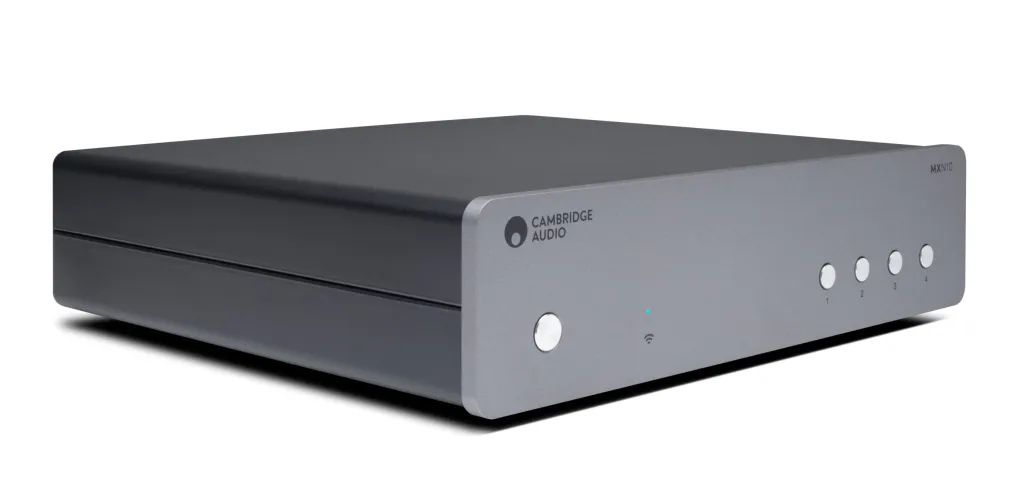
The Cambridge MXN10 and AXN10 streamers bring the price of entry into the StreamMagic ecosystem to a more affordable level, but don’t compromise on the most useful features and quality of sound or build. The MXN10 is my pick of the two. A condensed, half-sized Cambridge streamer is a product I’ve wanted to see for a long time. It makes a terrific standalone device, and comes into its own as a streaming transport. If it ever becomes possible to get the highest resolution data out of it via USB into your external DAC, it would be one of, if not the best options for a streaming network bridge out there.
The software is what really makes the StreamMagic devices what they are. It’s the Swiss Army knife of streaming, with most features catered for and a future proof architecture that can remain current for years to come. It has one of the best apps on the market with an interface that blows Volumio and Play-Fi devices out of the water. Rock-solid performance, sonic neutrality and an abundance of features, all in a tiny box. What’s not to love?
For more, visit Audio Appraisal, where you’ll find Audio Equipment and Music Reviews, Opinions and Tutorials.


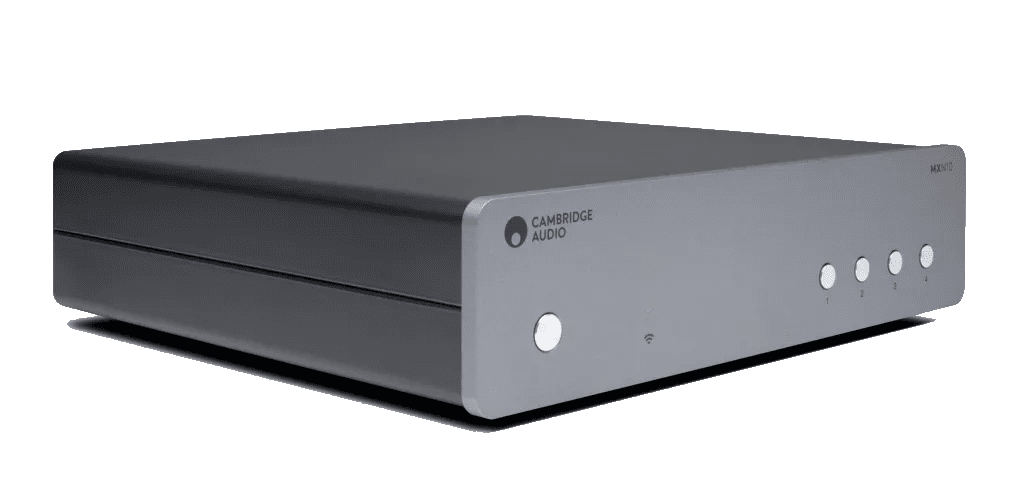







Leave a Reply